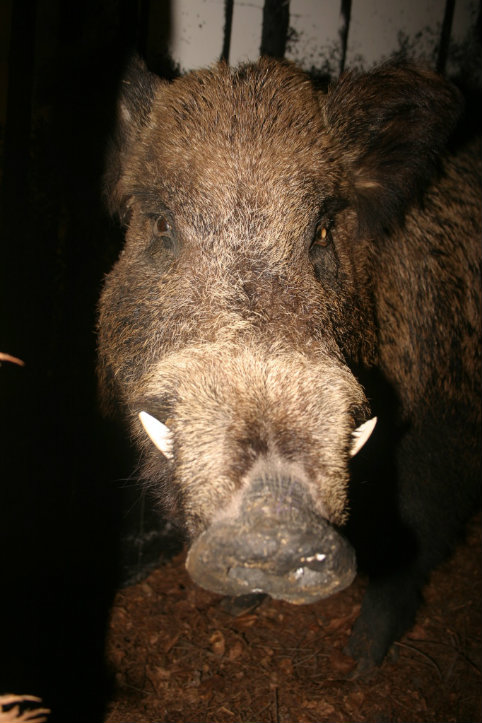Night Hunter: Strategies And Tactics For Successful Night Hunting

Table of Contents
Essential Equipment for Night Hunting
Successful night hunting hinges on having the right equipment. Investing in quality gear can significantly improve your chances of a successful and safe hunt.
Illumination is Key
Choosing the right light source is paramount for night hunting. Different situations call for different types of illumination.
-
Types of Lights:
- Headlamps: Provide hands-free illumination, ideal for navigating and tracking. Look for models with adjustable brightness and beam patterns (flood vs. spot).
- Spotlights: Powerful beams for long-range target identification, but require a free hand. Consider spotlights with variable intensity settings.
- Weapon-Mounted Lights: Allow for precise illumination of your target while keeping both hands on your weapon. Ensure compatibility with your firearm and choose a light with a sturdy mount.
-
Red Light Advantage: Red light preserves your night vision far better than white light. Use red light for navigation and checking equipment to maintain optimal low-light vision.
-
Battery Management: Always carry extra batteries. Nothing is worse than your light failing during a critical moment. Regularly check battery levels and consider using rechargeable batteries.
Night Vision Technology
Night vision technology significantly enhances your ability to observe and track game animals in low-light conditions.
-
Digital vs. Thermal Night Vision:
- Digital Night Vision: Amplifies existing ambient light, making it effective in moonlit conditions. It's generally more affordable but performs less effectively in complete darkness.
- Thermal Night Vision: Detects heat signatures, making it effective regardless of ambient light. This technology is more expensive but offers superior performance in complete darkness.
-
Magnification and Field of View: Select a device with appropriate magnification and field of view for your specific needs. Higher magnification provides a closer look at your target but reduces your field of view.
-
Maintenance and Care: Properly cleaning and storing your night vision equipment is crucial for longevity. Follow manufacturer instructions for cleaning and storage to maximize lifespan.
Clothing and Camouflage
Appropriate clothing is crucial for a successful and comfortable night hunt. Stealth and warmth are key considerations.
-
Scent Control: Use scent-eliminating laundry detergent and sprays to minimize your scent profile. Wind direction is crucial, as animals have a much keener sense of smell than humans.
-
Nighttime Camouflage: Choose clothing that blends with the nighttime environment. Darker colors, such as dark greens, browns, and blacks, will help you blend in. Avoid bright or reflective materials.
-
Layering for Temperature Regulation: Nighttime temperatures can fluctuate dramatically. Layer your clothing to regulate your body temperature and remain comfortable throughout the night.
Weapon Selection and Preparation
Selecting the right firearm and ammunition is essential for a clean and ethical kill.
-
Suitable Firearms: Choose a firearm appropriate for your target animal and hunting conditions. Rifles are generally preferred for longer ranges, while shotguns may be suitable for closer-range hunting.
-
Zeroing Your Weapon: Ensure your weapon is properly zeroed for night shooting using night vision or other low-light aiming devices.
-
Silencers: Silencers reduce noise, enhancing your stealth and reducing the risk of spooking game animals.
-
Ammunition Selection: Choose appropriate ammunition for your chosen game, considering factors such as bullet weight and energy.
Understanding Nighttime Animal Behavior
Understanding the behavior of your target animal is paramount to a successful night hunt. Nocturnal animals have unique habits that must be considered.
Nocturnal Animal Habits
Different nocturnal animals have varying feeding patterns and movement habits.
- Feeding Patterns: Research the typical feeding times of your target animal. This will help you determine the best time to hunt.
- Movement Habits: Observe common travel routes and resting areas used by your prey.
- Tracks and Signs: Learn to identify the tracks and other signs of your target animal. This will help you locate them more efficiently.
- Senses in Low Light: Nocturnal animals often rely more on hearing and smell than sight in low light. Be mindful of wind direction and minimize noise.
Choosing the Right Hunting Location
Location selection significantly impacts your success.
- High Prey Density: Identify areas known to have a high density of your target animal.
- Wind Direction and Terrain: Hunt downwind of the target to mask your scent and choose terrain that offers cover and concealment.
- Safe and Quiet Access: Plan your access route carefully to avoid disturbing animals before you begin hunting.
Night Hunting Tactics and Techniques
Mastering night hunting techniques requires practice and patience.
Stealth and Approach
Silent movement is paramount.
- Natural Cover and Concealment: Use natural cover and concealment to your advantage.
- Downwind Approach: Approach your target from downwind to mask your scent.
- Patience and Observation: Patience is key. Take your time and observe your surroundings.
Shot Placement and Accuracy
Shooting in low light conditions requires precision.
- Night Shooting Drills: Practice night shooting drills to improve your accuracy in low light.
- Accurate Shot Placement: Accurate shot placement is crucial for a quick and clean kill.
- Proper Firearm Handling: Maintain proper firearm handling at all times to ensure safety.
Tracking and Recovery
Efficient tracking and recovery are vital after a successful shot.
- Tracking Dogs or Technology: Consider using tracking dogs or technological aids such as GPS trackers to locate harvested game.
- Blood Trails: Follow blood trails carefully and methodically, noting any changes in direction or intensity.
- Safe Handling and Field Dressing: Safely handle and field dress your game in accordance with all regulations and safety protocols.
Conclusion
Successful night hunting requires a combination of specialized equipment, understanding of animal behavior, and practiced techniques. By mastering the strategies and tactics outlined above, you can significantly improve your chances of a successful and safe night hunt. Remember to prioritize safety and ethical hunting practices at all times. Ready to embark on your next adventure? Learn more about mastering the art of night hunting and become a skilled night hunter today!

Featured Posts
-
 Reviving Downtowns The Role Of Sports Stadiums In Urban Renewal
May 11, 2025
Reviving Downtowns The Role Of Sports Stadiums In Urban Renewal
May 11, 2025 -
 Semana De Turismo En Uruguay Por Que Se Llama Asi Y Que Revela Sobre Su Laicidad
May 11, 2025
Semana De Turismo En Uruguay Por Que Se Llama Asi Y Que Revela Sobre Su Laicidad
May 11, 2025 -
 Baby Born Without Eyes A Comprehensive Guide To Bilateral Anophthalmia
May 11, 2025
Baby Born Without Eyes A Comprehensive Guide To Bilateral Anophthalmia
May 11, 2025 -
 Ufc 315 Early Predictions Potential Fight Outcomes And Betting Odds
May 11, 2025
Ufc 315 Early Predictions Potential Fight Outcomes And Betting Odds
May 11, 2025 -
 Asylum Volunteer Honors Pvv Ministers Veto
May 11, 2025
Asylum Volunteer Honors Pvv Ministers Veto
May 11, 2025
